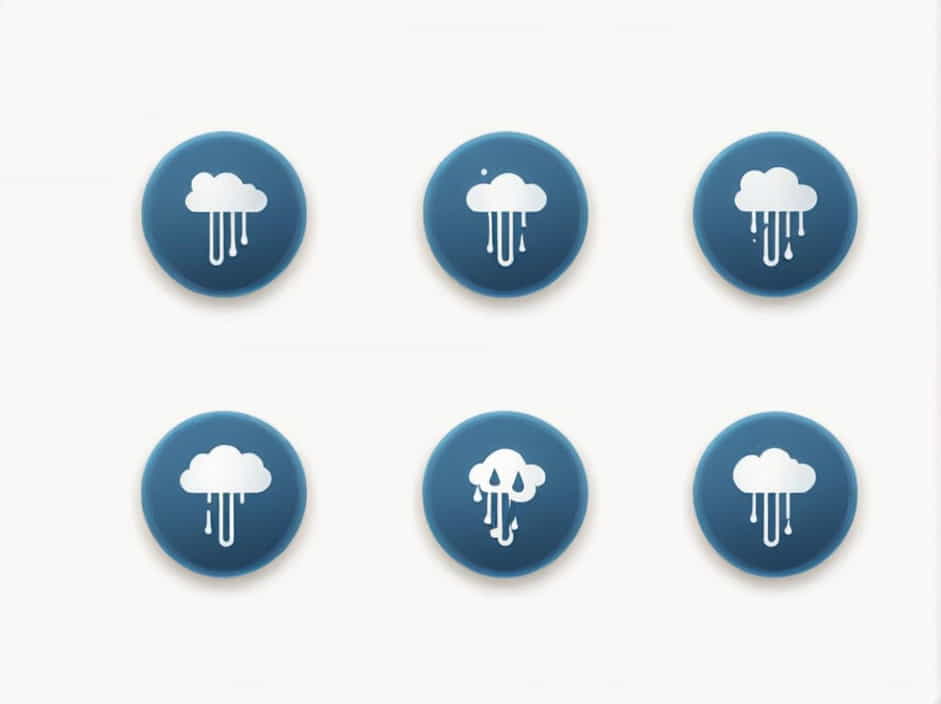Rainfall is a crucial part of the water cycle, helping to sustain ecosystems, agriculture, and human settlements. One of the most common types of rainfall is convectional rainfall, which occurs when the sun heats the earth’s surface, causing warm, moist air to rise, cool, condense, and form rain.
This type of rainfall is mostly found in tropical regions, where temperatures are high and there is abundant moisture in the atmosphere. In this topic, we will explore the characteristics of convectional rainfall, the processes involved, and the regions where it is most common.
What Is Convectional Rainfall?
Convectional rainfall is a type of precipitation that occurs due to the intense heating of the earth’s surface. When the sun warms the land, the air above it becomes lighter and rises. As it ascends, the air cools and condenses, forming cumulonimbus clouds, which result in heavy rainfall, often accompanied by thunderstorms.
Key Characteristics of Convectional Rainfall:
- Occurs mostly in tropical and equatorial regions.
- Happens daily, especially in the afternoon when temperatures peak.
- Produces heavy but short-lived downpours.
- Often accompanied by thunder and lightning.
- Associated with high humidity and rapid evaporation.
The Process of Convectional Rainfall
1. Solar Heating
During the daytime, the sun heats the land, causing the air near the surface to warm up.
2. Rising Warm Air (Convection Currents)
The warm air becomes less dense and rises into the atmosphere. As it moves upward, it carries moisture from the earth’s surface.
3. Cooling and Condensation
As the moist air rises higher, it reaches cooler layers of the atmosphere. The water vapor condenses to form clouds.
4. Formation of Cumulonimbus Clouds
With continuous condensation, the clouds grow vertically, forming large cumulonimbus clouds, which bring heavy rainfall.
5. Rainfall and Thunderstorms
Once the clouds become saturated, they release intense rain, often with thunder and lightning. The process repeats daily in many tropical regions.
Where Is Convectional Rainfall Most Common?
1. The Amazon Rainforest (South America)
- One of the most famous regions for convectional rainfall.
- Located in the equatorial zone, where temperatures are high year-round.
- Experiences daily rainfall, which sustains the lush tropical rainforest.
2. The Congo Basin (Central Africa)
- Found in the heart of Africa, near the equator.
- Receives intense sunlight, leading to high evaporation and convection currents.
- Has a dense rainforest ecosystem, dependent on frequent convectional rain.
3. The Islands of Southeast Asia (Indonesia, Malaysia, Philippines)
- Located in the tropical belt, where humidity and warmth are constant.
- Experience daily thunderstorms, especially in the afternoon.
- The combination of oceanic moisture and solar heating enhances convectional rainfall.
4. The Indian Subcontinent (During Monsoon Season)
- In summer, intense heating leads to rising air and heavy convectional rain.
- This happens before the monsoon winds bring widespread rainfall.
- Major cities like Mumbai, Kolkata, and Chennai experience frequent afternoon downpours.
5. The Tropical Regions of Australia (Northern Australia)
- The northern part of Australia, including Darwin, experiences tropical convectional rain.
- Especially common during the wet season (November to April).
- Contributes to the unique savanna and rainforest ecosystems in the region.
6. Central America and the Caribbean
- Countries like Costa Rica, Panama, and Jamaica experience regular convectional rainfall.
- Tropical islands surrounded by warm oceans create ideal conditions for moist air to rise.
Importance of Convectional Rainfall
1. Supports Rainforests and Biodiversity
Convectional rainfall is essential for the survival of tropical rainforests, which house more than half of the world’s species. The Amazon, Congo, and Southeast Asian forests rely on daily rainfall for their ecosystems.
2. Helps Agriculture in Tropical Regions
Many farmers in tropical areas depend on convectional rainfall to grow crops like rice, bananas, cocoa, and coffee. Consistent rainfall supports year-round farming.
3. Regulates Temperature
Frequent rain helps cool the hot tropical climate, preventing extreme heat from building up in equatorial regions.
4. Supports Water Cycle and River Systems
Rivers like the Amazon, Congo, and Mekong are fed by convectional rainfall, ensuring a constant supply of fresh water.
Challenges Associated with Convectional Rainfall
1. Flash Floods
Because convectional rainfall is heavy but short, it can cause sudden floods, especially in urban areas with poor drainage.
2. Thunderstorms and Lightning
Many convectional rain showers come with intense thunderstorms, which can cause power outages, fires, and injuries.
3. Soil Erosion
Heavy rainfall can wash away topsoil, reducing soil fertility in agricultural lands.
4. High Humidity and Discomfort
Regions with convectional rainfall often experience high humidity, making the climate feel hot and sticky. This can lead to heat exhaustion and discomfort.
How People Adapt to Convectional Rainfall
1. Urban Drainage Systems
Cities in convectional rainfall zones have developed effective drainage systems to prevent flooding.
2. Weather Forecasting and Alerts
Governments use weather satellites and radars to warn residents about incoming thunderstorms and heavy rain.
3. Proper Agricultural Planning
Farmers schedule planting and harvesting based on rainfall patterns to maximize crop yield.
4. Thunderstorm Safety Measures
People in convectional rainfall areas avoid outdoor activities during peak storms and use lightning protection systems on buildings.
Convectional rainfall is a key climate feature in tropical and equatorial regions, shaping ecosystems, agriculture, and human life. It occurs due to intense solar heating, causing moist air to rise, cool, and condense into heavy rainfall.
Areas such as the Amazon Rainforest, Congo Basin, Southeast Asia, and parts of India and Australia experience frequent convectional rain, benefiting biodiversity and farming. However, it also presents challenges like floods, thunderstorms, and soil erosion.
Understanding where and how convectional rainfall occurs helps people prepare for its effects and use it to their advantage in farming, water management, and environmental conservation.
